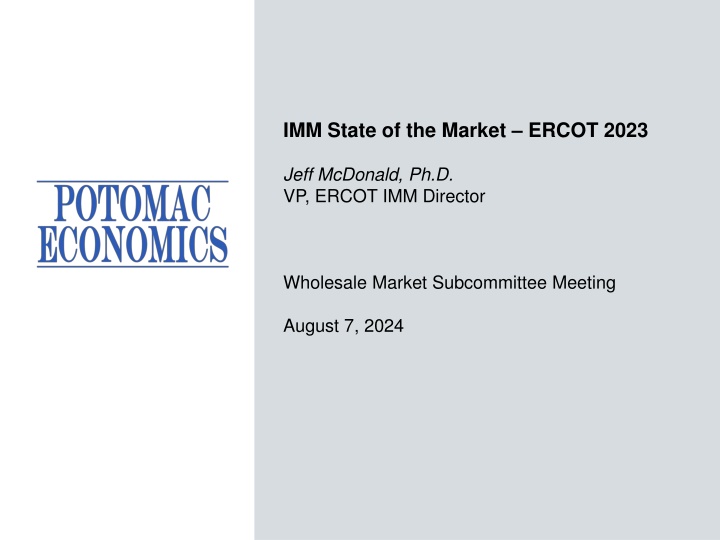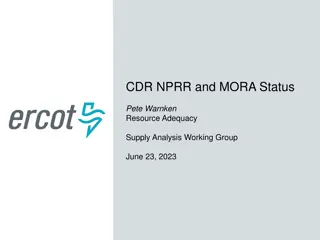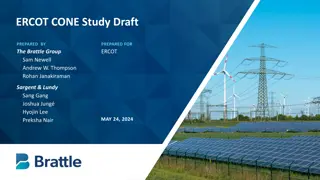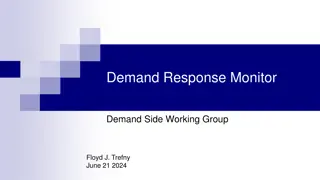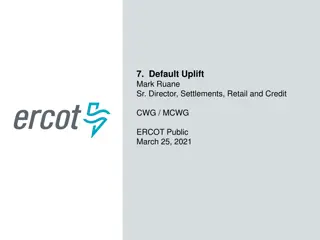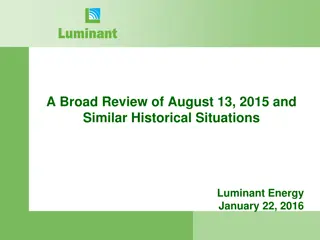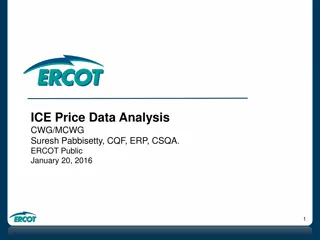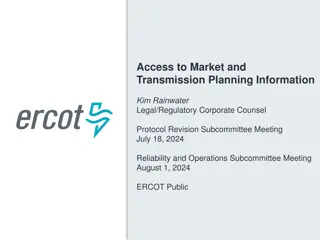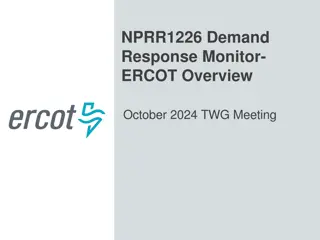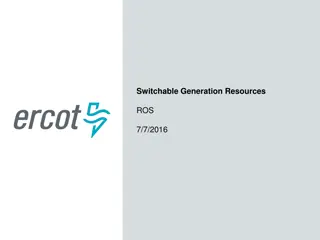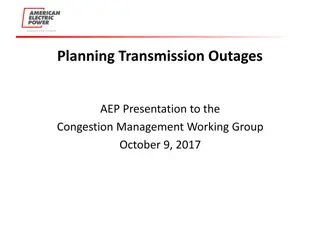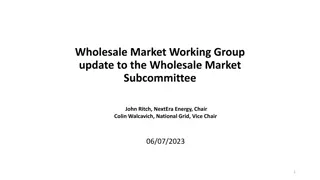Energy Market Analysis in ERCOT 2023
The State of the Market report for ERCOT in 2023 highlights key trends such as energy prices, ECRS impact on prices, load trends, supply changes in generation mix, transmission congestion, and net revenues analysis. Find insights on real-time prices, excess costs, load growth, generation mix shifts, congestion costs, and net revenue performance in different zones.
Download Presentation

Please find below an Image/Link to download the presentation.
The content on the website is provided AS IS for your information and personal use only. It may not be sold, licensed, or shared on other websites without obtaining consent from the author.If you encounter any issues during the download, it is possible that the publisher has removed the file from their server.
You are allowed to download the files provided on this website for personal or commercial use, subject to the condition that they are used lawfully. All files are the property of their respective owners.
The content on the website is provided AS IS for your information and personal use only. It may not be sold, licensed, or shared on other websites without obtaining consent from the author.
E N D
Presentation Transcript
IMM State of the Market ERCOT 2023 Jeff McDonald, Ph.D. VP, ERCOT IMM Director Wholesale Market Subcommittee Meeting August 7, 2024
2023 Energy Prices Average real-time prices fell 13% from 2022 Real-time energy value for 2023 was $30 billion. Primary Price Movers: lower natural gas prices (-60%), adverse effects of the ECRS implementation prohibited further price decrease. Tighter range of prices across zones, as seen prior to 2022. 2
ECRS Impact on Price in 2023 Price Impact of ECRS ECRS implementation created considerable excess cost in 2023 Doubled real-time energy price for June - December Estimated excess cost was over $12b $250 $15.0 Simulated Correction to Price Actual Price Cumulative Market Costs ($ Billions) $200 $12.0 Average Prcies ($/MWh) $150 $9.0 Average Monthly Price Increase $100 $6.0 $50 $3.0 $0 $0.0 Jun Jul Aug Sept Oct Nov Dec 3
Load Trends Total ERCOT load increased in 2023 Average load in ERCOT grew 3.4% from 2022 Record peak demand of 85.7 GW on August 10, 2023 Annual Load Statistics by Zone 4
Supply Changes Annual Generation Mix Approximately 10,500 MW of new generation resources came online in 2023 1,800 MW of wind 5,800 MW of solar 1,900 MW of energy storage resources 970 MW of natural gas resources The generation share from wind was 24.3% of the annual generation in 2023 Solar contributed 7.3% Coal down from 16.6% in 2022 to 13.9% in 2023 5
Transmission Congestion Real-time congestion costs were down 15%, to $2.4B Lower natural gas price contributed to decrease. West zone high cost from high renewable output and growth of oil and gas loads. Transmission upgrades relieved congestion cost in Houston area. Congestion Cost by Zone 6
Net Revenues Gross revenues minus production costs were well above the estimated cost of new entry for a CT in all zones Combustion Turbine Net Revenues The effect of ECRS pushed net revenues from in the range of CONE to well above. $800 ECRS Effects Energy Reserves Net Revenues ( $/KW - year) $700 $600 $500 $400 $300 Estimated Cost of New Entry $200 $100 $0 North North North North North North South South South South South South Houston Houston West Houston West Houston West Houston West Houston West 2018 2019 2020 2021 2022 2023 7
Recommendations Number Brief Description 4 new recommendations Continue to prioritize implementation of RTC and single model for energy storage resources New Recommendations to Improve Market Performance 2023-1 2023-2 Increase a constraint s shadow price cap in real-time when appropriate Modify the Proxy Offer Curve for renewable resources without a submitted energy offer curve Improve the procurement and deployment of ECRS Improve the pricing and offer requirements of the Firm Fuel Supply Service 2023-3 2023-4 Additional Recommended Market Improvements from Prior Years 2022-1 Implement a multi-interval real-time market 2022-3 Allow transmission reconfigurations for economic benefits 2022-4 Change the linear ramp period for ERS summer deployments to 3 hours 2022-5 Change historical lookback period for ORDC mu and sigma calculations 2021-1 Eliminate the small fish rule 2021-2 Implement an uncertainty product 2021-3 Reevaluate net metering at certain sites 2020-3 Implement smaller load zones that recognize key transmission constraints 2020-4 Implement a Point-to-Point Obligation bid fee 2019-2 Price ancillary services based on the shadow price of procuring each service 2015-1 Modify the allocation of transmission costs by transitioning away from the 4 Coincident Peak method. 8
Conclusion Full 2023 State of the Market Report can be found [add link] 9
